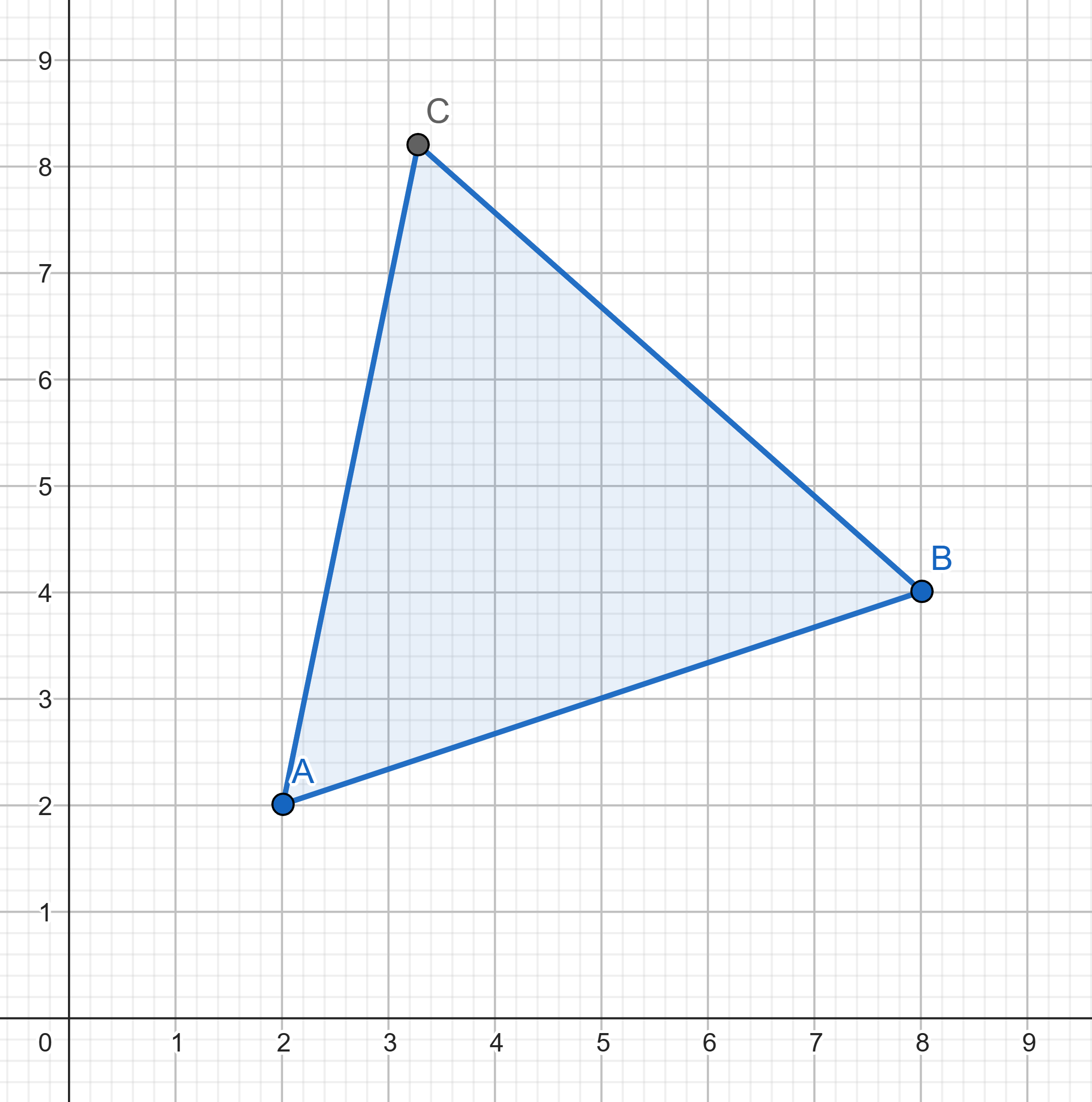Problems
The numbers \(x\) and \(y\) satisfy \(x+7 \geq y+8\). Prove that \(x>y\).
There exist various ways to prove mathematical statements, one of the possible methods, which might come handy in certain situations is called Proof by contradiction. To prove a statement we first assume that the statement is false and then deduce something that contradicts either the condition, or the assumption itself, or just common sense. Thereby concluding that the first assumption must have been wrong, so the statement is actually true.
Can three points with integer coordinates be the vertices of an
equilateral triangle?

Prove that there are infinitely many natural numbers \(\{1,2,3,4,...\}\).
Prove that there are infinitely many prime numbers \(\{2,3,5,7,11,13...\}\).
Is it possible to colour the cells of a \(3\times 3\) board red and yellow such that there are the same number of red cells and yellow cells?
Prove the divisibility rule for \(25\): a number is divisible by \(25\) if and only if the number made by the
last two digits of the original number is divisible by \(25\);
Can you come up with a divisibility rule for \(125\)?
Which of the following numbers are divisible by \(11\) and which are not? \[121,\, 143,\, 286, 235, \, 473,\, 798, \, 693,\, 576, \,748\] Can you write down and prove a divisibility rule which helps to determine if a three digit number is divisible by \(11\)?
Sometimes one can guess certain multiples of a number just by looking at it, the idea of this sheet is to learn to recognise quickly using tricks when a natural number is divisible by another number.
Today we’re going to learn a simple idea from a branch of math called combinatorics, which is all about clever ways to count things. The idea we’re learning is called the Product Rule.
The Product Rule says this: if you need to do two actions in a row, and the first action can be done in, say, \(5\) different ways, and for each of those choices the second action can be done in \(4\) different ways, then the total number of possible outcomes is \(5 \times 4\).
Why? Because every choice for the first action opens up all the possible choices for the second action. So each of the \(5\) first choices has \(4\) second choices that can follow it. Let’s see in a few examples this idea in practice: